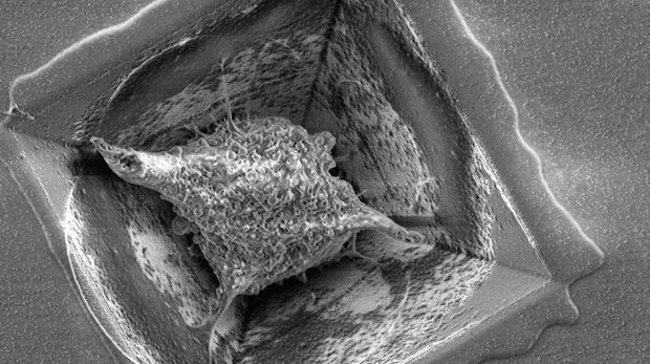3D "brain on chip" has potential for more realistic insights into brain cells
A three-dimensional “brain-on-a-chip” should provide researchers with a more realistic model of neurons and how they are affected by different medicines, according to its developer.

The 3D array, consisting of a sieve-like structure with hundreds of openings shaped like inverted pyramids, has been developed by Bart Schurink, a researcher at the University of Twente’s MESA+ Institute for Nanotechnology.
It will allow researchers to carry out more realistic studies of brain cell operation than the conventional 2D model consisting of a petri dish with flat electrodes, Schurink said.
“If you culture cells on a 2D surface, the cells will become flat, and they will not be in their evolved morphology, or shape, anymore,” said Schurink. “What biologists believe is that cells in the body have a round shape, and to get more representative results, you need to have this round morphology on your electrodes."
The structure, known as a micro sieve electrode array, contains 900 pyramid-shaped openings. Each of these openings is equipped with an electrode to measure electrical signals from the cells or send stimuli to the network.
Register now to continue reading
Thanks for visiting The Engineer. You’ve now reached your monthly limit of news stories. Register for free to unlock unlimited access to all of our news coverage, as well as premium content including opinion, in-depth features and special reports.
Benefits of registering
-
In-depth insights and coverage of key emerging trends
-
Unrestricted access to special reports throughout the year
-
Daily technology news delivered straight to your inbox










Apprenticeship Funding Cuts to Cost Employers £214m
I had no idea the taxpayer was funding such an advanced level of education. Certainly graduates and post-graduates don´t receive comparable financial...